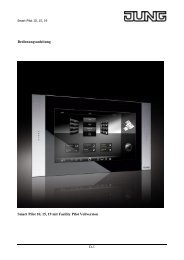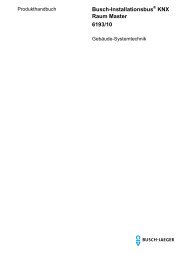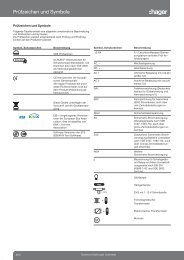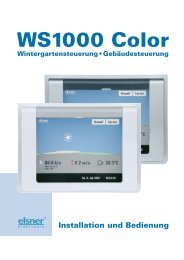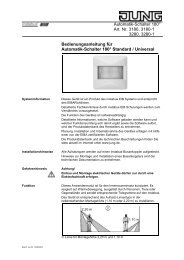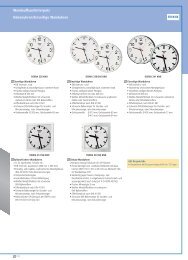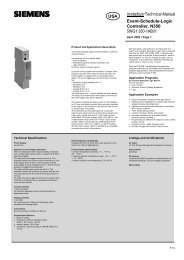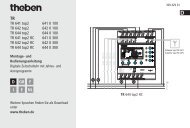You also want an ePaper? Increase the reach of your titles
YUMPU automatically turns print PDFs into web optimized ePapers that Google loves.
4.2.4.2.2 Display elements<br />
Introduction<br />
Display elements can be positioned anywhere within the available Content area. Their size are<br />
specified by the parameters "Width" and "Height". The display elements themselves are limited<br />
by a frame.<br />
A display element is added to a page using the context menu (click the right mousebutton). The<br />
parameters of a display element are located in the parameter group of the element.<br />
Each display element has a designation with which it is displayed in the tree structure of the<br />
ETS plug-in.<br />
Illustration<br />
A display element also possesses a text, which can be displayed on the panel display. Depending<br />
on the chosen option, the text either agrees with the element designation in the ETS plug-in<br />
or it is specified by the project planner. It is also possible to specify no special display text.<br />
The text can be positioned both horizontally and vertical in the area of the display element (X<br />
position and Y position). In particular in conjunction with wallpapers, it may be that the frame<br />
and / or the background of the display element should be hidden or made transparent, in contrast<br />
to the selected colour scheme.<br />
A display element may also show a icon, in addition or as an alternative to the text display. This<br />
element icon is permanently allocated to the display element and cannot be changed during<br />
panel operation. The element icon is positioned independently of the position of the display text<br />
using separate parameters. An element icon is configured using the "Icon..." parameter in the<br />
"General" parameter group of the parameter node of a display element.<br />
If a display element is only to have one display function without any operating function, it can be<br />
set as "Not selectable".<br />
Order-No. 7574 00 1X<br />
picture 11: Types of display elements<br />
(21) Display element with text display<br />
(22) Display element with icon display (element icon)<br />
Software "...590101"<br />
Functional description<br />
i Text and icons can be combined with each other. In this case the text may overwrite the<br />
icon.<br />
i In addition to an element icon (see picture 11), a status icon can also be assigned to the<br />
display status values of the element (see following section "Display function"). It should be<br />
noted that, depending on the planned icon position, the element icons and status icons<br />
may overlap. In so doing, a status icon overwrites an element icon. A status icon also overwrites<br />
the display text of an element.<br />
As the icons can also have transparent colours (see chapter 4.2.4.1.6. Image list), overlaps<br />
may also achieve interesting display effects (e.g. level displays, etc.).<br />
Page 54 of 222




